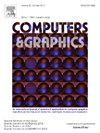An introduction to and survey of biological network visualization
IF 2.5
4区 计算机科学
Q2 COMPUTER SCIENCE, SOFTWARE ENGINEERING
引用次数: 0
Abstract
Biological networks describe complex relationships in biological systems, which represent biological entities as vertices and their underlying connectivity as edges. Ideally, for a complete analysis of such systems, domain experts need to visually integrate multiple sources of heterogeneous data, and visually, as well as numerically, probe said data in order to explore or validate (mechanistic) hypotheses. Such visual analyses require the coming together of biological domain experts, bioinformaticians, as well as network scientists to create useful visualization tools. Owing to the underlying graph data becoming ever larger and more complex, the visual representation of such biological networks has become challenging in its own right. This introduction and survey aims to describe the current state of biological network visualization in order to identify scientific gaps for visualization experts, network scientists, bioinformaticians, and domain experts, such as biologists, or biochemists, alike. Specifically, we revisit the classic visualization pipeline, upon which we base this paper’s taxonomy and structure, which in turn forms the basis of our literature classification. This pipeline describes the process of visualizing data, starting with the raw data itself, through the construction of data tables, to the actual creation of visual structures and views, as a function of task-driven user interaction. Literature was systematically surveyed using API-driven querying where possible, and the collected papers were manually read and categorized based on the identified sub-components of this visualization pipeline’s individual steps. From this survey, we highlight a number of exemplary visualization tools from multiple biological sub-domains in order to explore how they adapt these discussed techniques and why. Additionally, this taxonomic classification of the collected set of papers allows us to identify existing gaps in biological network visualization practices. We finally conclude this report with a list of open challenges and potential research directions. Examples of such gaps include (i) the overabundance of visualization tools using schematic or straight-line node-link diagrams, despite the availability of powerful alternatives, or (ii) the lack of visualization tools that also integrate more advanced network analysis techniques beyond basic graph descriptive statistics.

求助全文
约1分钟内获得全文
求助全文
来源期刊

Computers & Graphics-Uk
工程技术-计算机:软件工程
CiteScore
5.30
自引率
12.00%
发文量
173
审稿时长
38 days
期刊介绍:
Computers & Graphics is dedicated to disseminate information on research and applications of computer graphics (CG) techniques. The journal encourages articles on:
1. Research and applications of interactive computer graphics. We are particularly interested in novel interaction techniques and applications of CG to problem domains.
2. State-of-the-art papers on late-breaking, cutting-edge research on CG.
3. Information on innovative uses of graphics principles and technologies.
4. Tutorial papers on both teaching CG principles and innovative uses of CG in education.
 求助内容:
求助内容: 应助结果提醒方式:
应助结果提醒方式:


